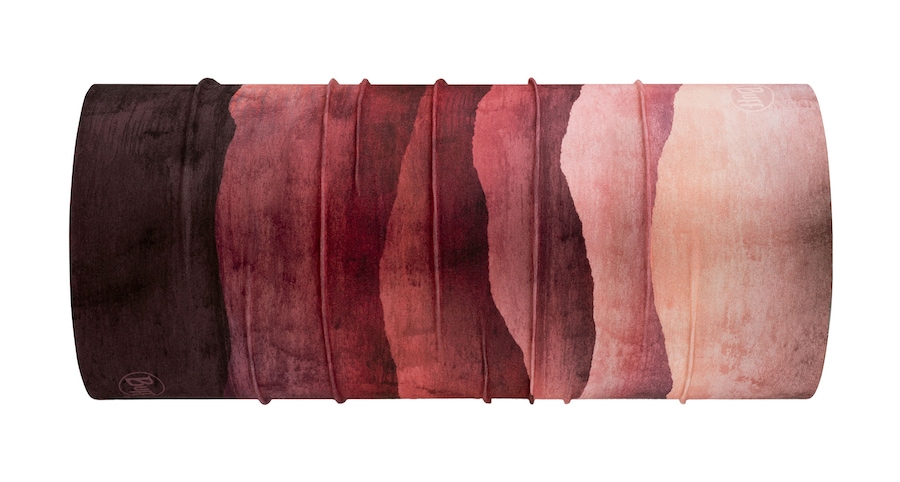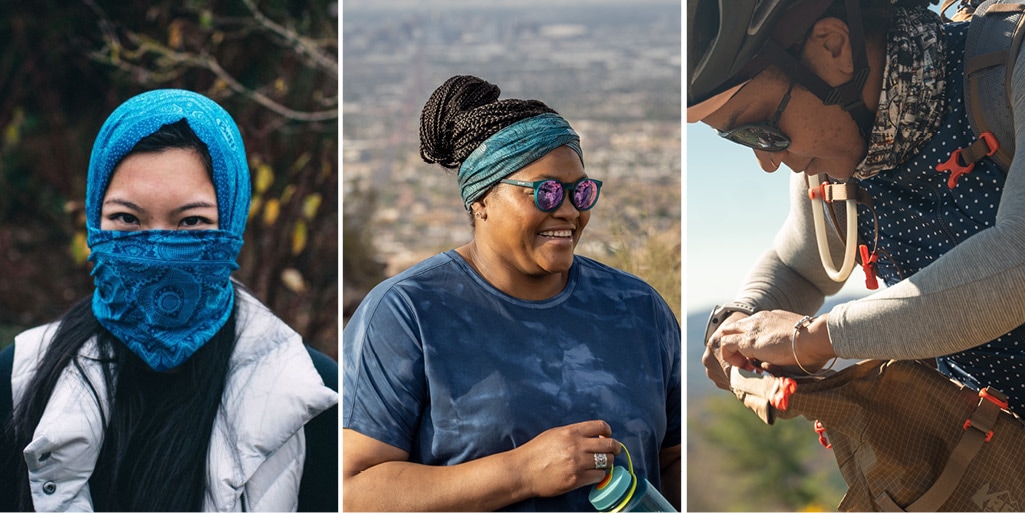I heard you snicker. How could a humble neck tube inspire affection? I sneered too, once.
In 2007, Backpacker magazine asked me to test this new “multifunctional headwear” out of Barcelona, Spain, that had started showing up in U.S. stores. Back then, I assumed the Buff neck/head/whatever gaiter (herewith referred to simply as a Buff) was a cheap gimmick—it didn’t even have proper seams to finish the ends. It was just a rough-cut tube of lightweight synthetic knit fabric, but it promised to do everything short of cooking me dinner: Buff was a neck gaiter, a hair tie, a brimmed hat, even a wrist sweatband. It seemed like a lot of hype for a little scrap of material.
And yet, the first time I wore my new Buff, while skiing, I noticed how easily I could breathe through the thin fabric. This was a huge improvement over the thick and fleecy neck-warmers that stifled my air intake when I pulled them over my cheeks and nose. It turned out that by using the marvelously airy and adaptable Buff, I could protect my skin from frostbite and enjoy oxygen at the same time. Wow!
Wherever I wore it, my Buff delivered just-right protection from the cold, wind and sun. During spring ski tours, when intense UV rays assaulted me from above and below, my Buff shielded my face better than sunscreen and ended my unfortunate habit of burning my columella. (Google it.) Come summer, I wore my Buff paddling, fly-fishing, biking and backpacking (it obligingly kept my pack straps from chafing my neck and shoulders).
When I no longer want its coverage around my face and neck, I simply wrap my Buff around my wrist—no need to find a pocket or stash it in a backpack. I’ve used it to screen pine needles and other debris out of backcountry water sources. Tying my Buff around my friend’s injured arm helped gauze stay put while she biked home after a bloody fall. One function that definitely wasn’t promoted on Buff’s packaging: A ski buddy found that he could sip whiskey from his flask without bothering to lower his Buff from his mouth.

In 2009, I bought an oatmeal-colored merino wool Buff (that actually has finished hems at the ends!)—and I haven’t cycled it out of my gear closet yet. It’s become my favorite accessory for high-elevation exploration: The pale color deflects the sun’s scorching heat while the wool regulates my temperature across all of the mountains’ climate moods. This Buff has cinched my cap to my head in gusty Patagonia and warmed my ears throughout my backyard (aka Park Range) in northwest Colorado. It’s probably the oldest piece of gear that I still use, which makes it something of a landmark; if my gear closet was a town, my Buff would be its oldest continually operating saloon.
Buff itself has also become an icon. In 2022, the company turned 30 years old, and the neck tube that dirt-biker Joan Rojas invented to shield his face from dust had become a mainstay of the outdoor world. Imitators abound.
Buff, meanwhile, is bent on differentiating itself through sustainability. The company just earned B Corp certification and is aiming for carbon-neutral status for its in-house operations, located near Barcelona, Spain, which account for about 90 percent of its manufacturing. And after many years of using recycled postconsumer synthetics and cruelty-free merino wool, it just released biodegradable Buffs made of PrimaLoft® Bio, a synthetic fleece that aims to address the problem of PFAS (also known as “forever plastics”) with a makeup that decomposes back into materials that are found in nature.
While these practices and materials make Buff products more expensive than many copycats, they aim for better, not cheaper. It may be pretty ambitious for a simple neck tube, but that’s always been the brand’s M.O. As I discovered back in 2007, Buff talks a big game—and delivers.
